St. Petersburg's Landmark 'Fonari' Bathhouse Reopens After 15 Years
The bathhouse opened the first time 150 years ago.
In 1871 a very elegant bath house was opened on Fonarny Pereulok in St. Petersburg. Called the Voroninskiye Bani for the merchant who owned the building, Mikhail Voronin — or Fonarskiye Bani or just plain Fonari for the street it was on — in the Soviet period it became simply Bathhouse #43, with much of its elegance stripped away.
The bathhouse was closed in 2006 for a three-year reconstruction project, but it took 15 years to bring it back to its former glory, with a few 21st-century bells and whistles added. The project was headed by the Megre Interiors design bureau, with guidance from Artyom Shakhnazarov and the renowned architect Rafael Dayanov, who sadly did not live to see the reopening on April 23.
The bathhouse was closed in 2006 for a three-year reconstruction project, but it took 15 years to bring it back to its former glory, with a few 21st-century bells and whistles added. The project was headed by the Megre Interiors design bureau, with guidance from Artyom Shakhnazarov and the renowned architect Rafael Dayanov, who sadly did not live to see the reopening on April 23.
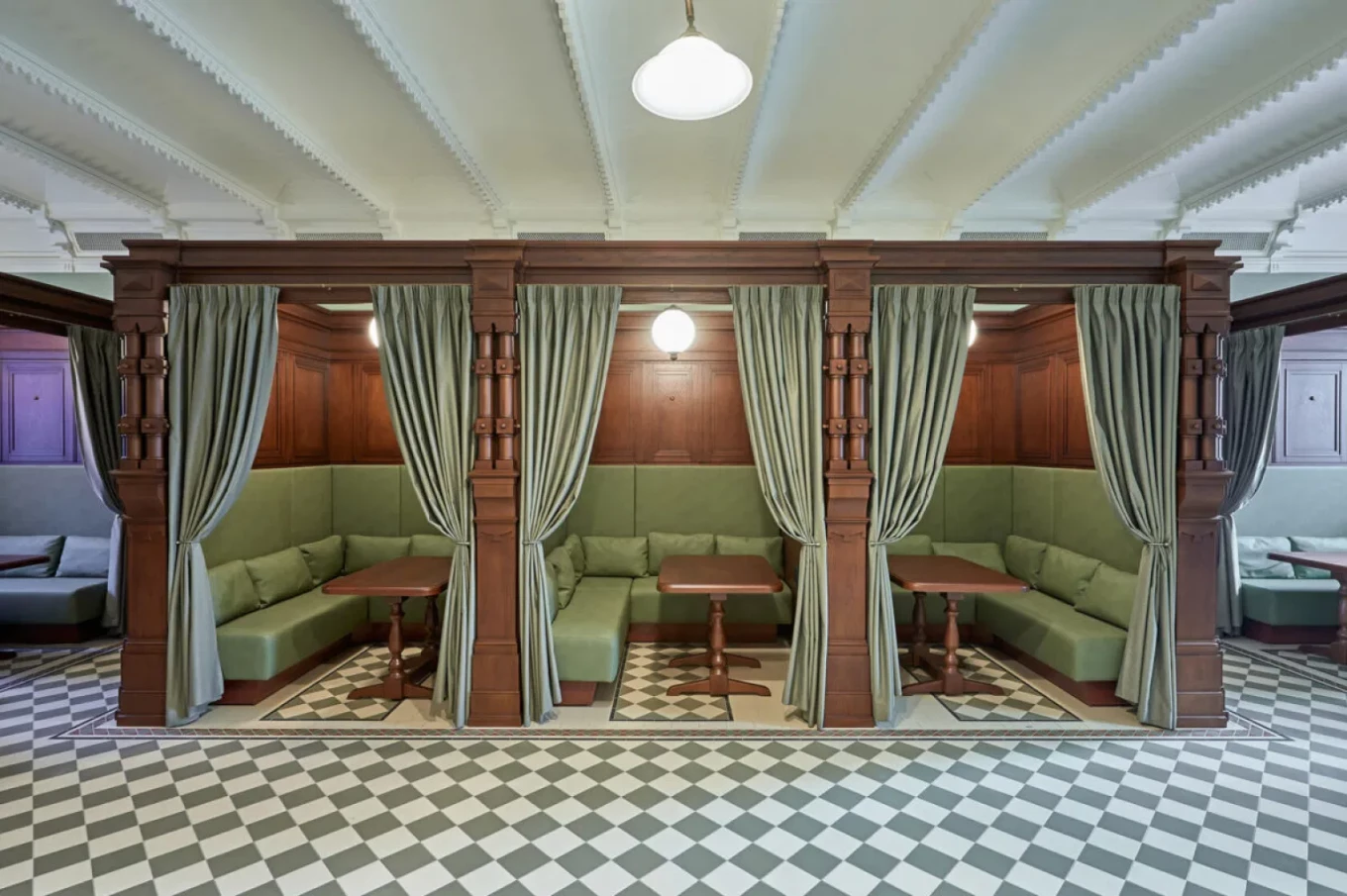
The men's section with privacy booths.
The Fonari bathhouse was the high-tech spa of its times, with special ventilation, hot and cold water, and special asphalt floor covering that was non-skid for wet bare feet.
fonari.ru
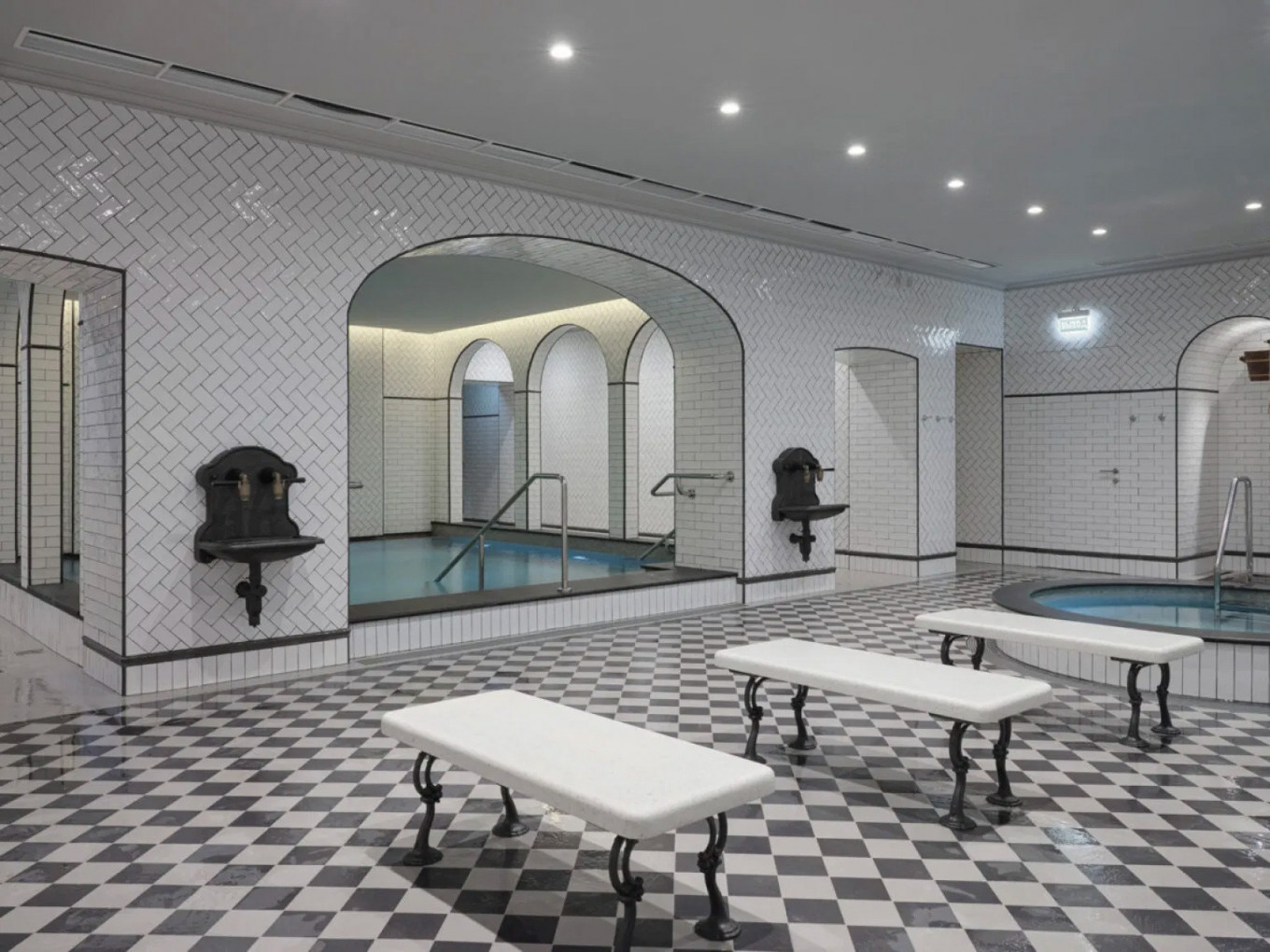
The brass fixtures were recreated.
The bathhouse had sections for men and women, pools, a laundry, fountains and marble statuary.
fonari.ru
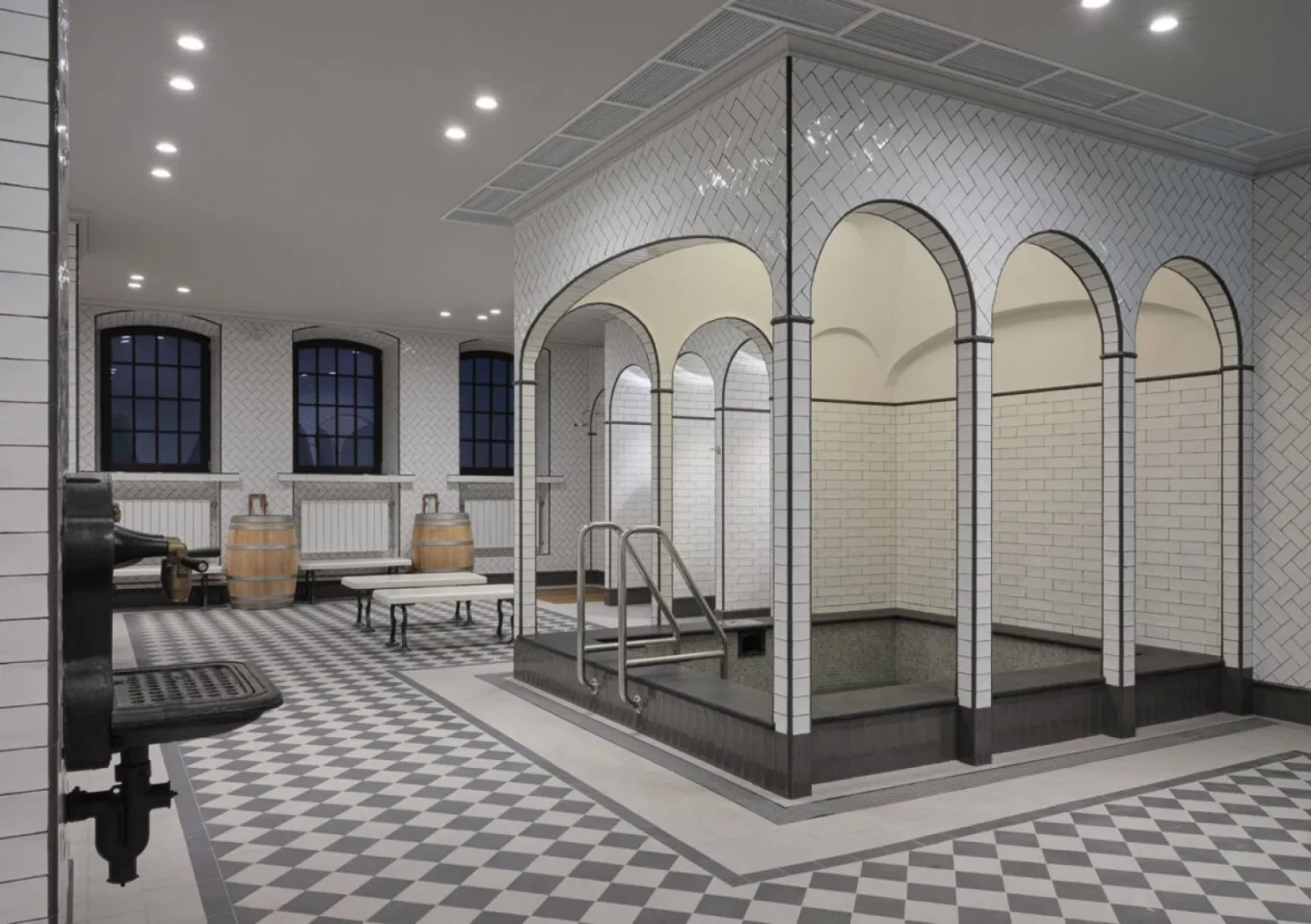
The plunge pool on the women's side.
The architect, Pavel Syuzov, won a medal at the Vienna Polytechnic Exhibition in 1872 for his innovative and beautiful design of Fonari.
fonari.ru
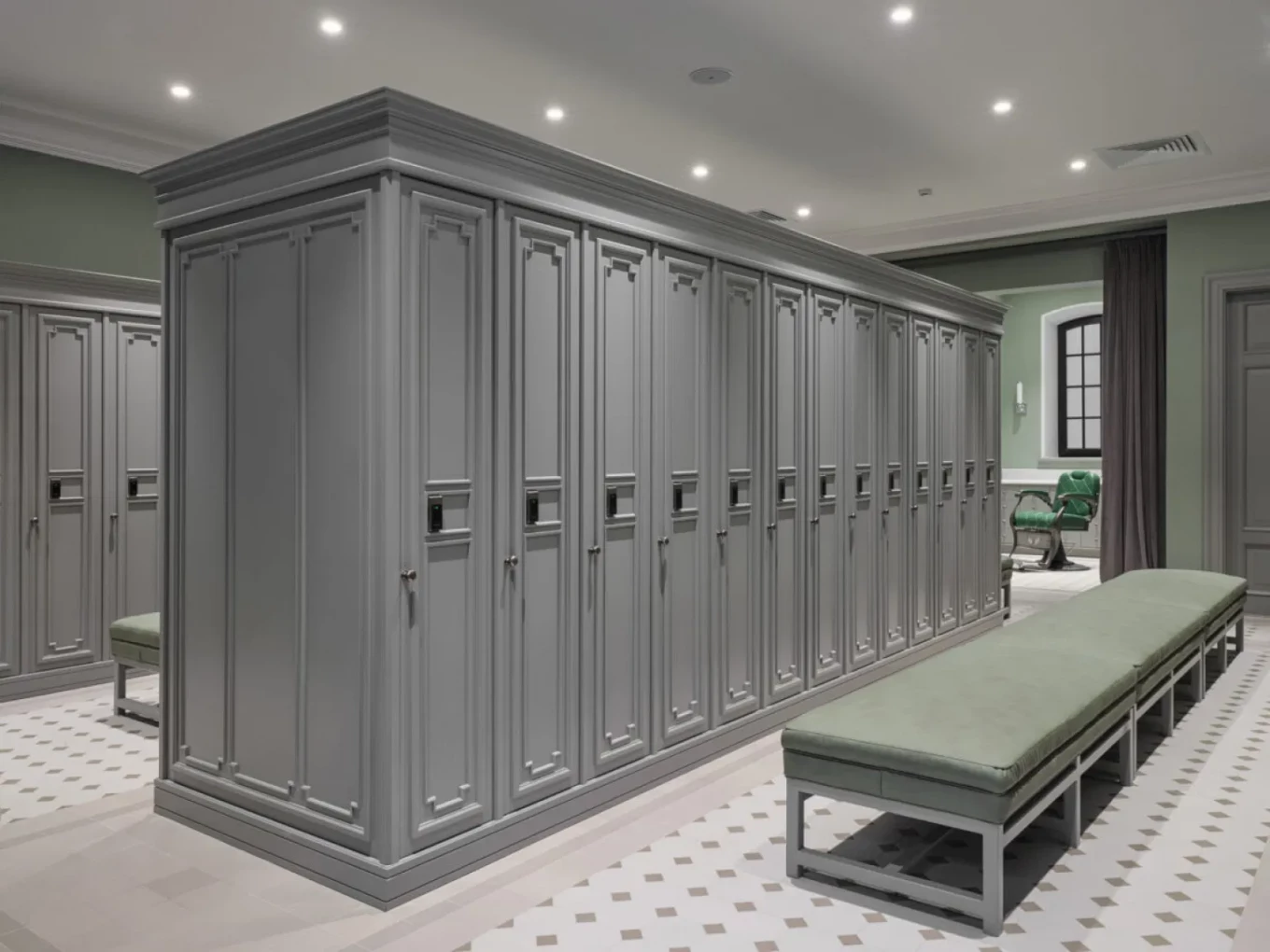
The men's side, where lockers have 21st-century security.
The bathhouse, while elegant, was in a red-light district and had a dubious, if not scandalous, reputation.
fonari.ru
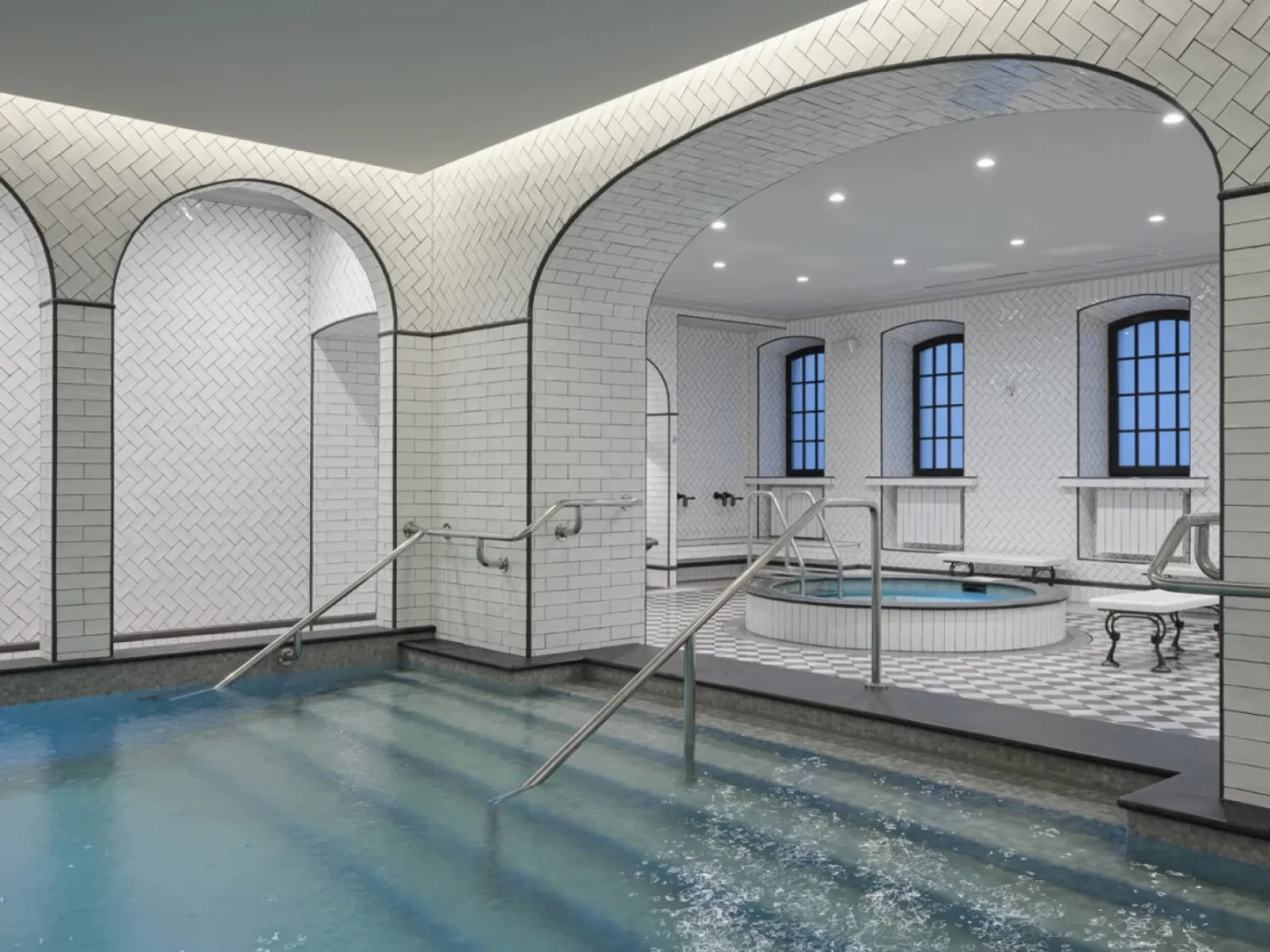
The men's side pool.
Grigory Rasputin, the monk reputed to be able to heal the last tsarevich, came here, and there were rumors of orgies and other sinful activities.
fonari.ru
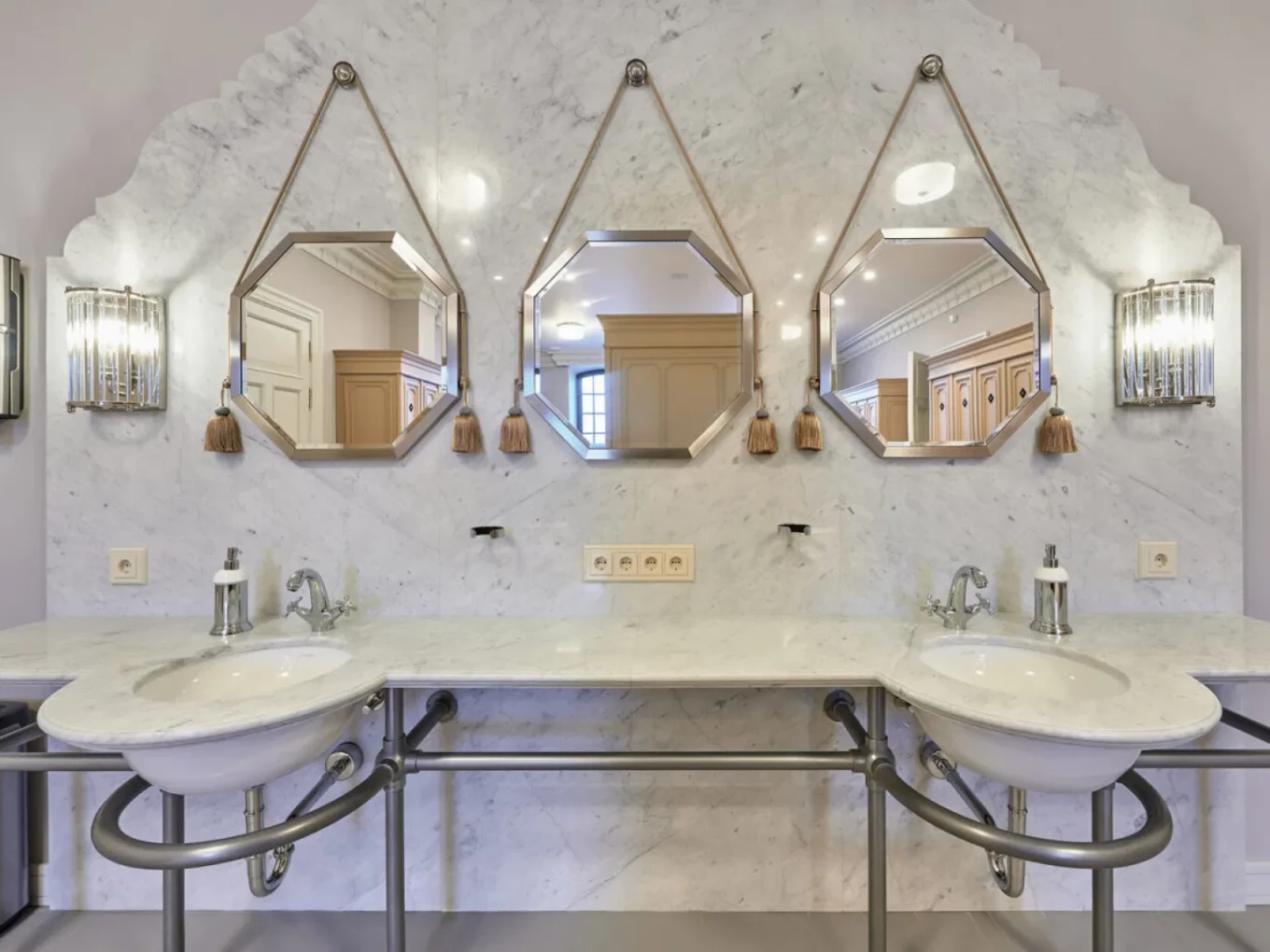
The women's side combines original marble with plenty of sockets for hair dryers.
Today the women's side includes a hammam, along with a traditional steam room, pool and wooden booths with privacy curtains.
fonari.ru
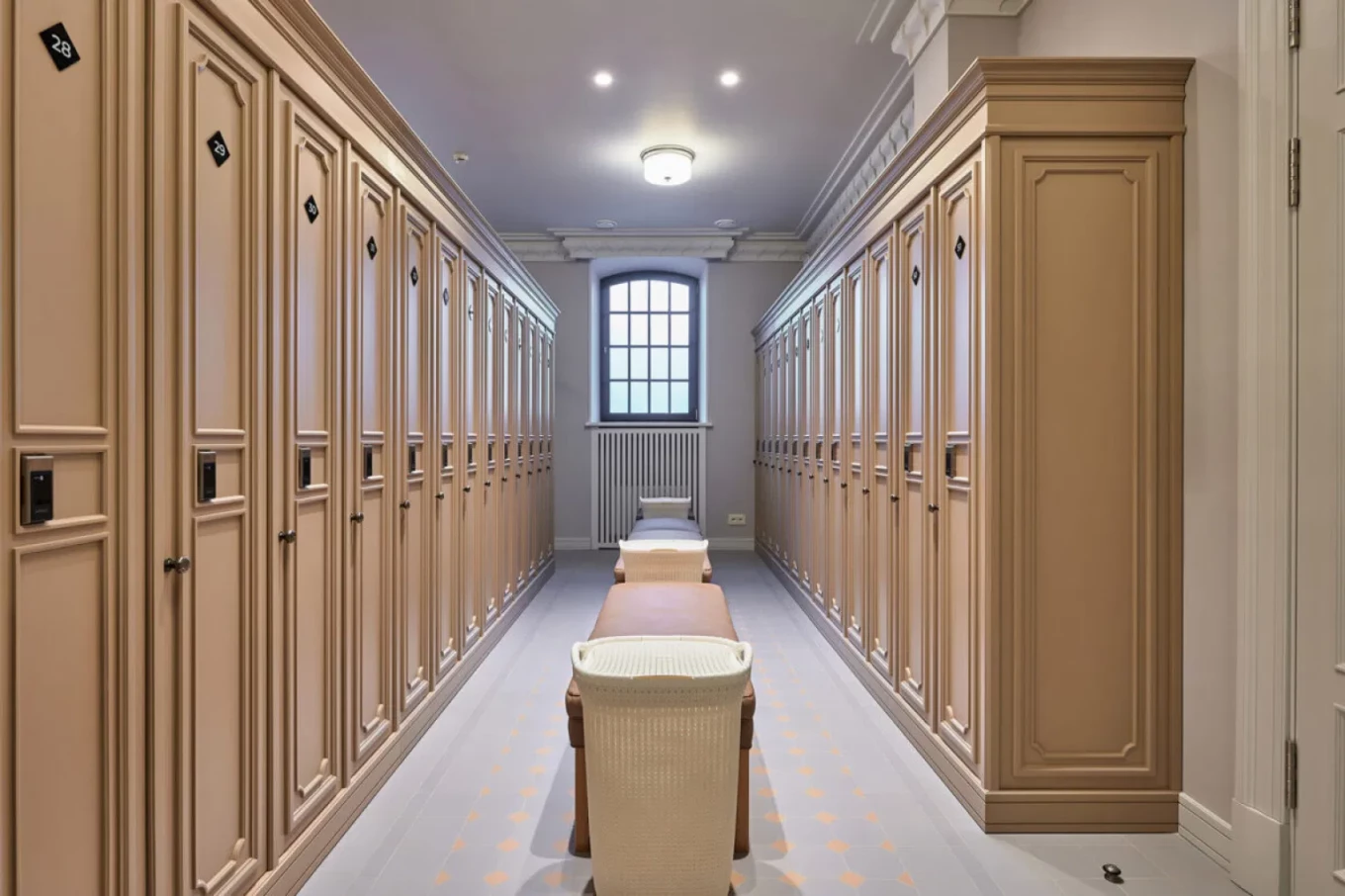
Light fixtures blend old and new.
The women's side offers a variety of additional spa services, such as body wrapping, peeling and massages.
fonari.ru
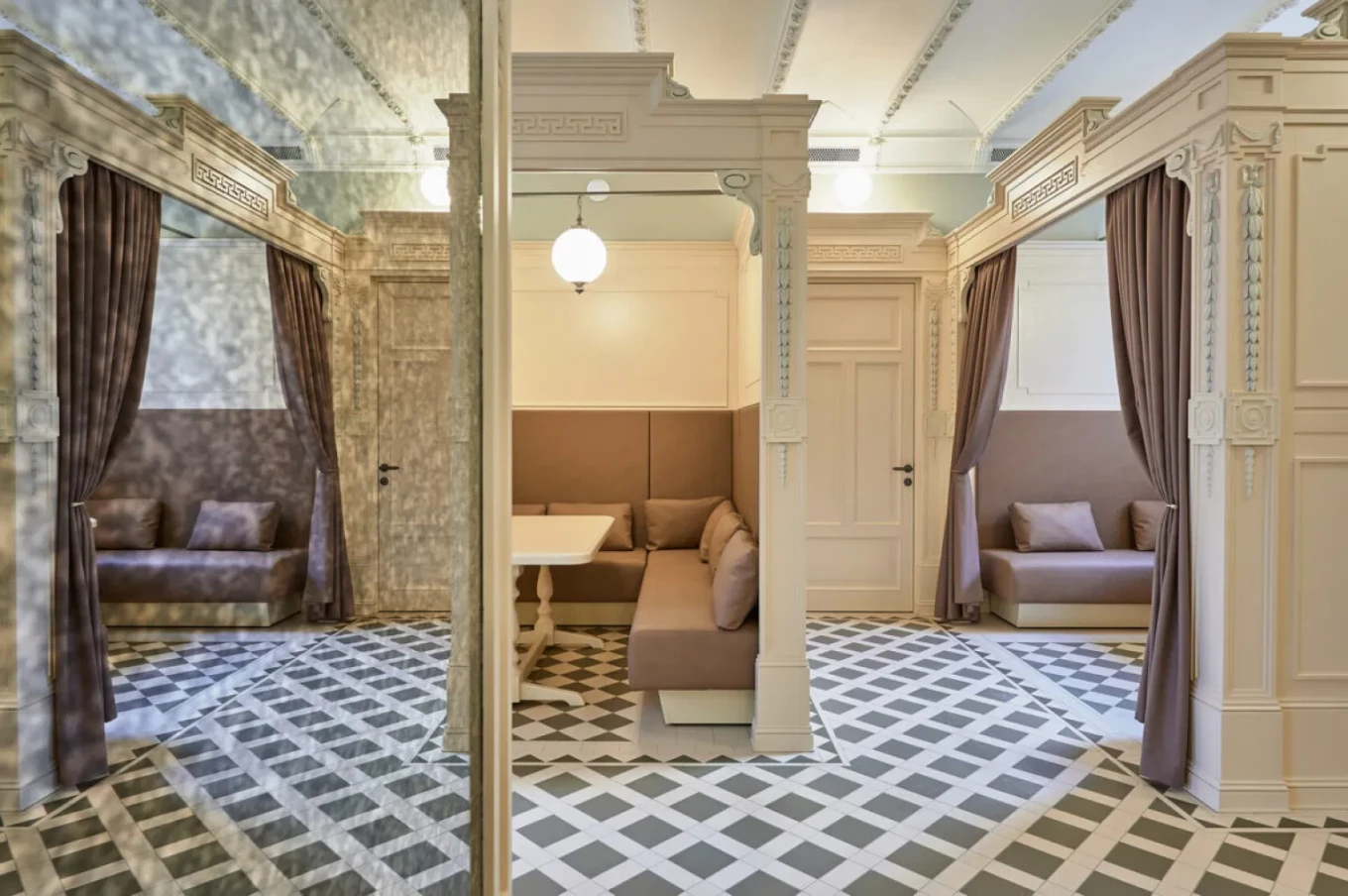
The women's side is decorated in calm beige.
A cafe provides traditional bathhouse fare: herbal, green and black teas, fizzy water, dried fruits and nuts, and simple sweets.
fonari.ru
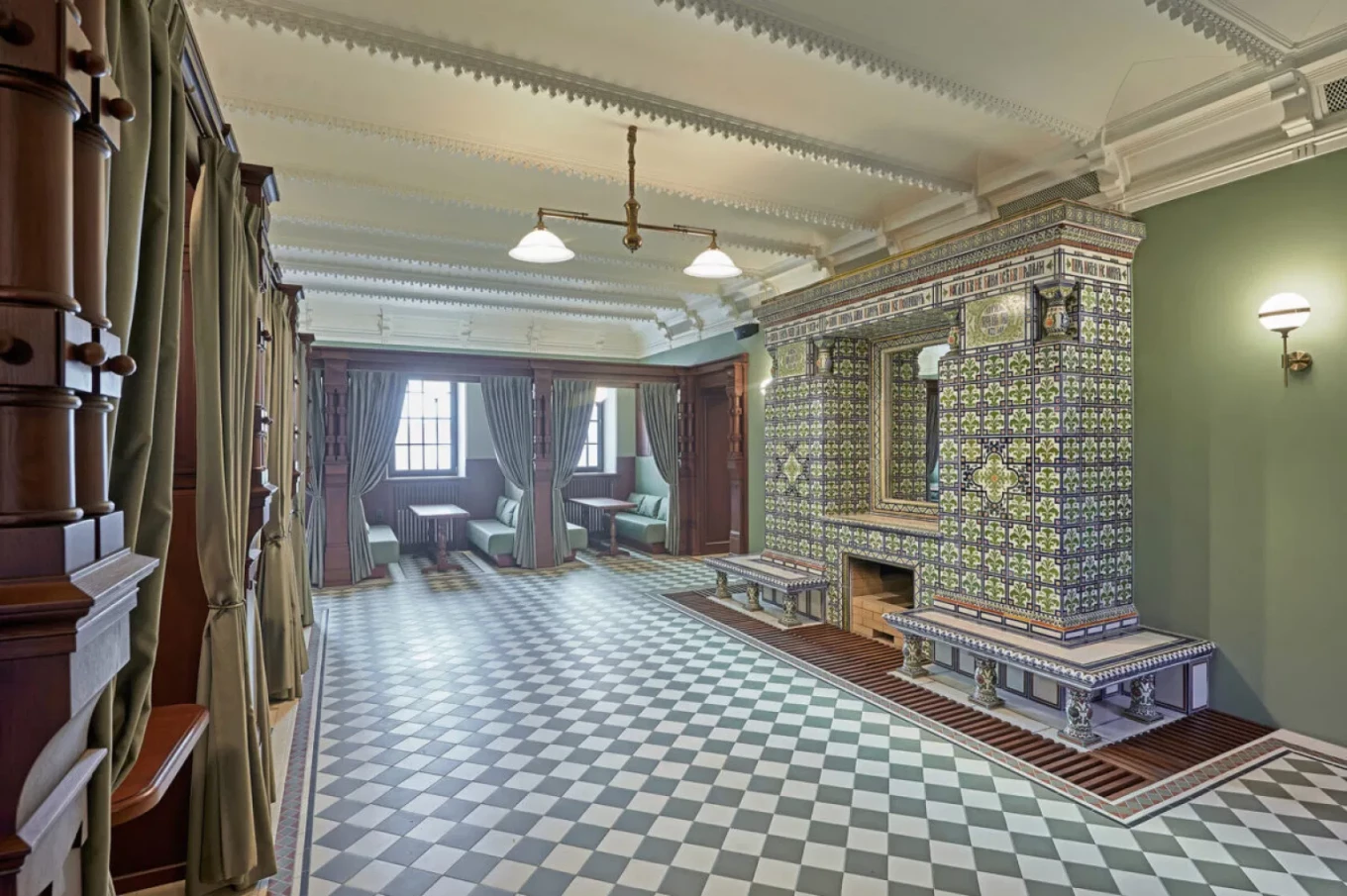
The tile heating stove was magnificently restored.
The bathhouse is open, but not quite finished. In future there will be a restaurant, a museum and more amenities.
fonari.ru
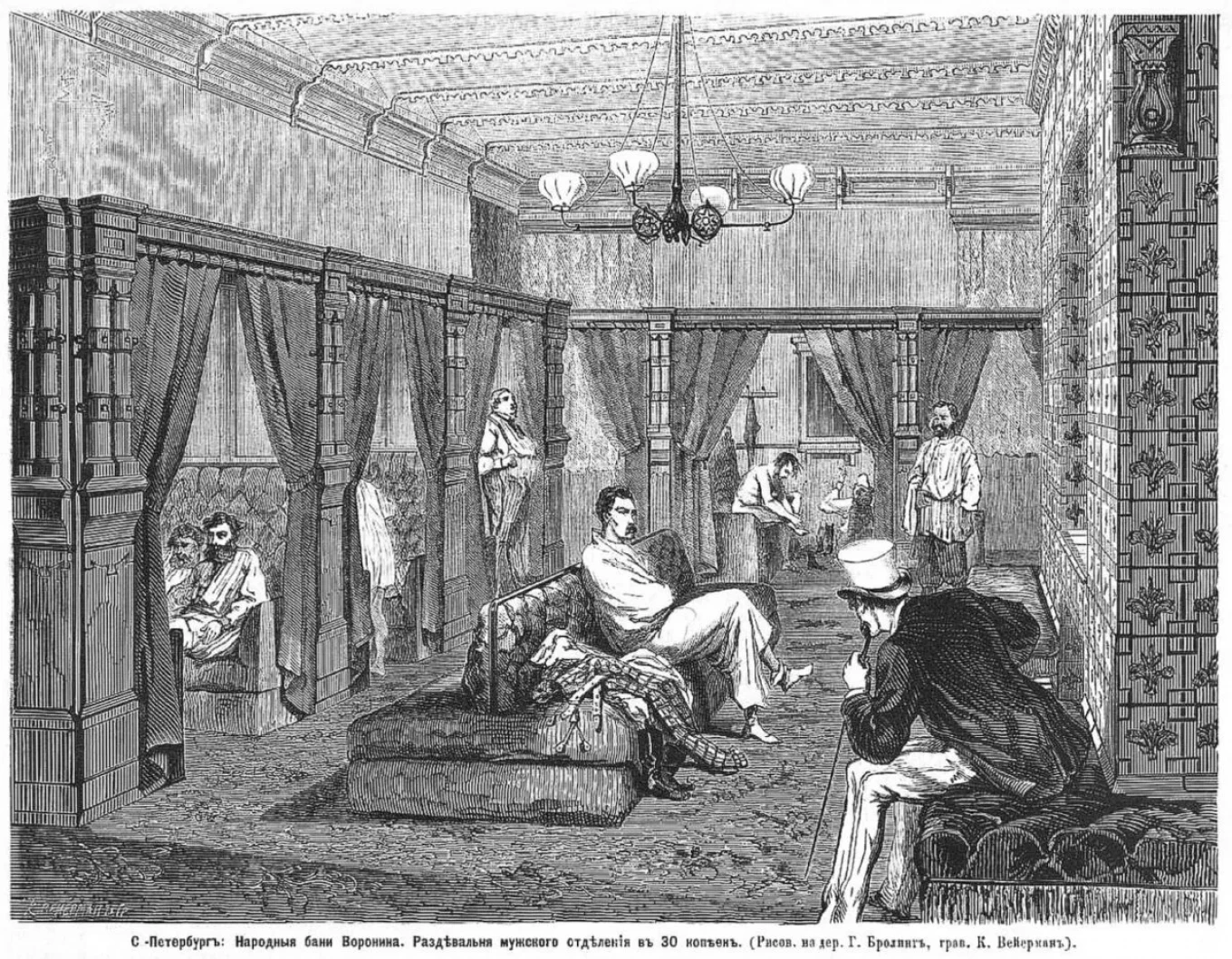
Post-steam exhausted relaxation has not changed over the centuries.
Today's prices would shock the original bathers: a basic entry fee of 3,000 rubles ($40) for men, 2,000 ($27) for women.
fonari.ru





